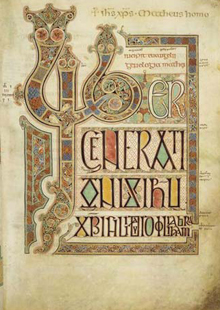GC 101: Schedule
Week 1: The Invention of Writing & Alphabets
Alphabets, The Asian Contribution, Earliest Writing; Egyptian Hieroglyphics; Papyrus and Writing; Cretan Pictographs; Greek Alphabet; Latin Alphabet; Chinese Calligraphy; Invention of Paper; Discovery of Printing
Week 2: The Asian Contribution & Illuminated Manuscripts
German Illustrated Books, The Classical Style; Celtic Book Design; Carolinginan Graphic Renewal; Romanesque & Gothic Manuscripts; European Block Printing; Movable Typography
Week 3: Printing Comes to Europe & The German Illustrated Book
An Epoch of Typographic Genius, Italian Writing Masters; French Innovation; Basel & Lyon Design Centers; The 17th Century; Rococo Graphic Design; Caslon & Baskerville; Origins of Information Graphics
Week 4: Exam 1
Week 5: Renaissance Graphic Design & An Epoch of Typographic Genius
The Arts & Crafts Movement, Innovations in Typography;
Wood Type Posters; Mechanization of Typography; Inventors of Photography; Development of Lithography; Century Guild; Kelmscott Press
Week 6: The Industrial Revolution & The Arts and Crafts Movement
Influence of Ukoyo-e; Cheret & Grasset; French Art Nouveau; English Art Nouveau; Innovation in Belgium & the Netherlands; German Jugenstil Movement
Week 7: Art Nouveau & The Genesis of 20th Century Design
Frank Lloyd Wright & the Glasgow School; The Vienna Secession; Peter Behrens & the New Objectivity; The London Underground
Week 8: Midterm Exam
Week 9: The Influence of Modern Art & Pictorial Modernism
Cubism; Futurism; Dada; Surrealism; Expressionism; Photography & the Modern Movement; Plakatstil; Sach Plakat; Postcubist Pictorial Modernism
Week 10: A New Language of Form & The Bauhaus and the New Typography
Russian Suprematism & Constructivism; De Stijl; The Bauhaus at Weimar; Jan Tschichold; Early 20th Century Typeface Design; Isotype Movement
Week 11: The Modern Movement in America & The International Typographic Style
Immigrants to America; Works Progress Administration; The Flight from Fascism; The War Years; Informational and Scientific Graphics
Week 12: Exam 3
Week 13: The New York School & Coporate Identity Systems
Functional Graphics for Science; Swiss Sans-Serif Typefaces; Masters of Classical Typography; Design in Basel & Zurich; International Typographic Style in America
Week 14: The Conceptural Image & National Visions in a Global Dialogue
Pioneers of the New York School; Graphic Design at Yale University; Editorial Design Revolution; The New Advertising; American Typographic Expressionism
Week 15: Postmodern Design & The Digital Revolution
New Wave Typography; Memphis and San Francisco Schools; Retro & Vernacular Design; Origins of Computer-Aided Graphic Design; Revitalizing Magazine Design; Digital Type Foundry; Conceptual Book Covers; Digital Vanguard
Week 16: Exam 4



